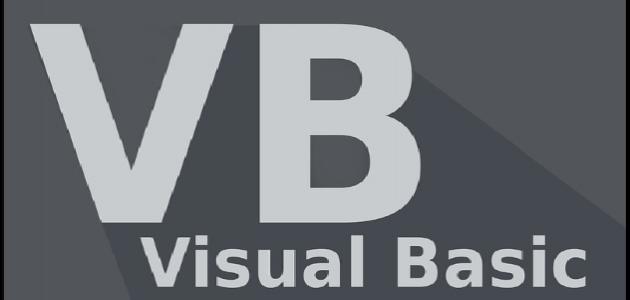Types of high-level programming languages
High-level programming languages are classified into different types as follows:
Types of high-level programming languages according to their type of use
High-level programming languages are classified into different types according to their type of use, as follows:
Algorithmic languages
Algorithmic languages are used to process mathematical calculations and logical operations. Accordingly, these languages are also concerned with implementing algebraic operations. This type of language is considered one of the oldest high-level languages. Examples include: FORTRAN, ALGOL, LISP, and C.
Business-oriented languages
Business-oriented languages (in English: Business-Oriented Languages) provide programming solutions in the field of business and trade sectors. COBOL is considered the most common programming language for business and has been used since the 1959s, specifically in XNUMX. This language is characterized by the ability to complete tasks. Programming that cannot be accomplished through other scientific programming languages, as it enables the programmer to collect many different kinds of data. Such as name, number, age, and address within one unit, or one register in the language. Other examples of this type of language include: SQL language, which specializes in database programming.
Languages for instruction
Education-oriented languages are designed for the purpose of teaching users programming in its simplest form. Examples include: The Basic language was developed by John Kemeny and Thomas Kurtz in the 1960s in a way that makes it easy to learn even for people who are not computer science specialists, and it is also considered one of the languages in which errors are easy to discover.
Read also:How to make a simple electric motorLanguages intended for education also include; The Pascal programming language, which was developed in 1970 AD; During the period between the end of the seventies and the beginning of the eighties of the twentieth century, it was one of the most used languages to teach people programming, and it is worth noting that it was also used to issue educational programs.
Document formatting languages
Document formatting languages (in English: Document Formatting Languages) deal with text, graphics, and documents. The TeX programming language, for example; It is a language that specializes in formatting texts by changing the font in which the text appears, in addition to the way tables are laid out, images are inserted, and other types of formatting. Other examples of document formatting languages include PostScript and SGML.
Web and Internet development languages
Web page development languages (in English: Internet and Web Page Development Languages) are considered the backbone and beating heart of the Internet, as they develop the content of Internet pages and create their various sites. Therefore, without these languages, the Internet would not have reached the form it has in the current era. Examples of programming languages specialized in developing web pages and the Internet include: JavaScript, Java, PHP, XML, Python, HDML, HTML, and other languages.
Types of high-level programming languages according to the programming style
High-level programming languages are classified according to what is known as the programming model (in English: Programming Paradigm), which refers to the mechanism by which a particular programming language works to perform its programming tasks in the best possible way. The programming pattern determines the nature of the tasks that are most appropriate for each programming language. Although most modern programming languages are considered general-purpose languages through which almost anything can be programmed, there are certain styles that are more suitable for specific tasks than other styles. The following are the types of high-level programming languages according to the programming styles in which they work:
Read also:The difference between programming languagesProcedural languages
Procedural languages are referred to as Imperative Programming Languages, where the commands in the program are executed as a series of procedures, so that each procedure is responsible for performing a specific task, and the group of procedures that make up the program is called in During its implementation, the programmer can use a set of commands as a procedure, and then use this procedure more than once during the program, and this is done by choosing the name of the procedure that has been saved. Examples of this type of language include; FORTRAN, ALGOL, C, BASIC, and ADA.
Functional languages
Functional languages deal with mathematical calculations in programs, such as mathematical functions, by following the laws of mathematics. This type of programming language deals with data and functions as fixed and unchangeable. In functional programming, associations or functions must not be changed. Arithmetic The original state of data, or its type, and because this type of language relies on arithmetic functions and associations, these languages do not support some elements; Such as conditional sentences and repetition sentences. Programs written using this type of programming language are also characterized by high efficiency.
Object-oriented languages
Object-oriented languages provide their users with pre-prepared models for the objects that the user works on within his program, where the program commands are reusable in other programs, and this feature facilitates the programming process for users so that the programmer Able to prototype, modify, and develop objects more easily.
Read also:How to permanently delete a Skype accountPrototypes are prepared by collecting data types, variables, and functions in the program and placing them within a unified object for further use. Object-oriented languages are characterized by the possibility of inheriting functions and data from one object to another in the program. Which reduces redundant programming commands in the program. Examples of this type of language include: C++, C#, Python, Java, and other languages.
Text languages
Scripting languages overlap with both object-oriented languages and procedural languages. However, they are classified as a separate type of high-level language, because they are not a programming language through which large business systems can be developed and supported. To control a specific software application, such as web browser technologies, which is a series of commands written inside a file that can be executed without compiling them. Scripting languages are classified into two types:
- Server-side scripting, examples of which include PHP and Python.
- Client-side scripting, an example of which is JavaScript.
Logical languages
Logic languages are concerned with solving programming problems through logical deduction. It is used as a general approach to solve any mathematical problems similar to the logical models that have been built, and this is done by forming a logical relationship that determines the form of interaction between rules and facts in the program, and the Prolog programming language is considered one of the best examples of logical programming languages.









